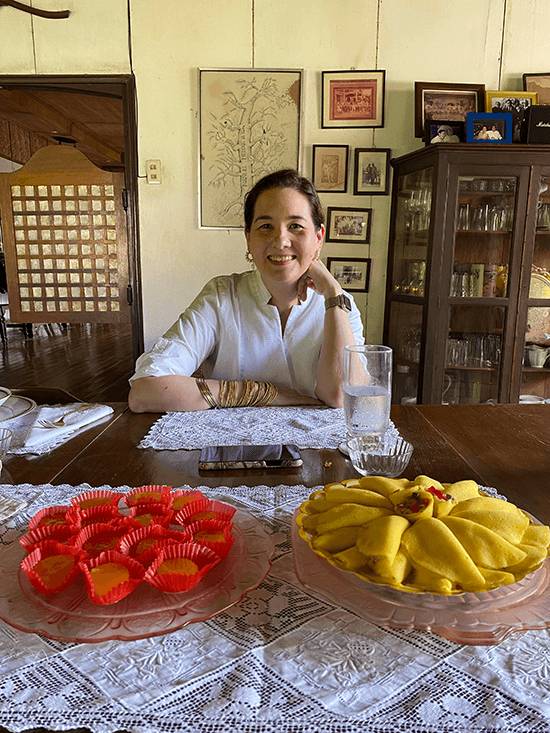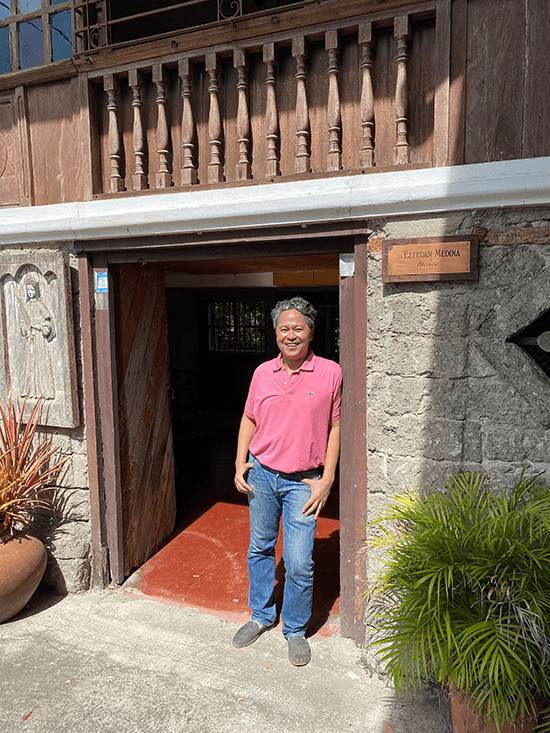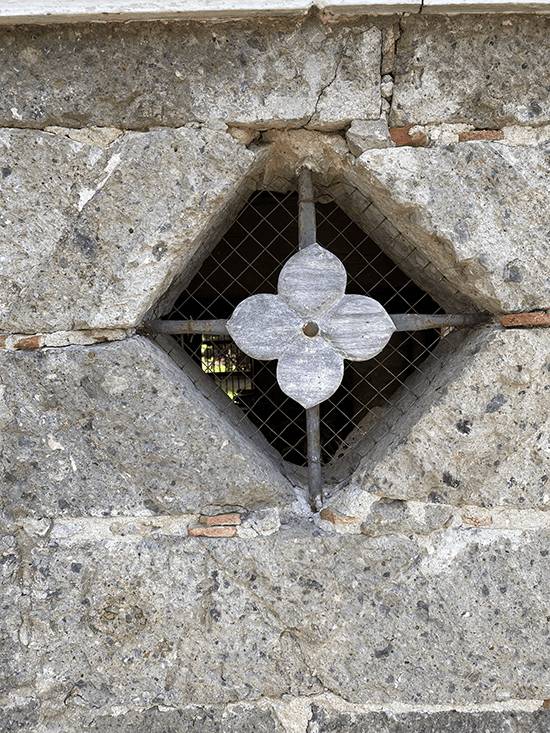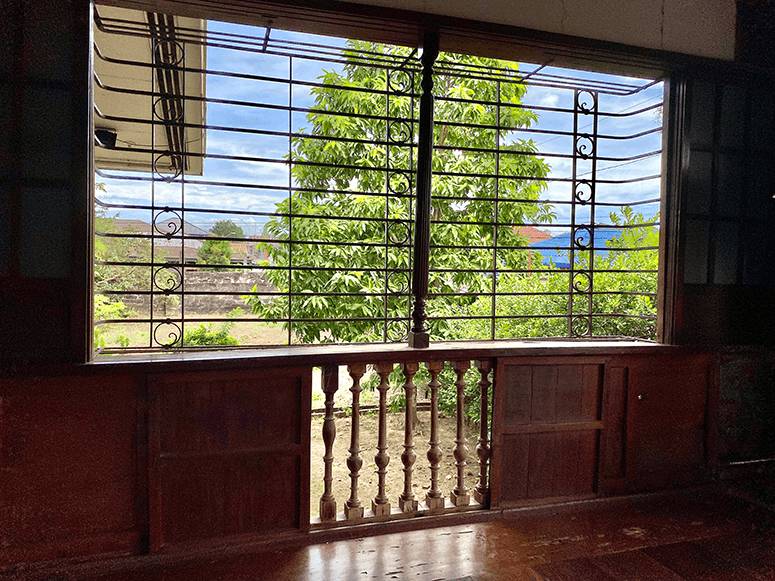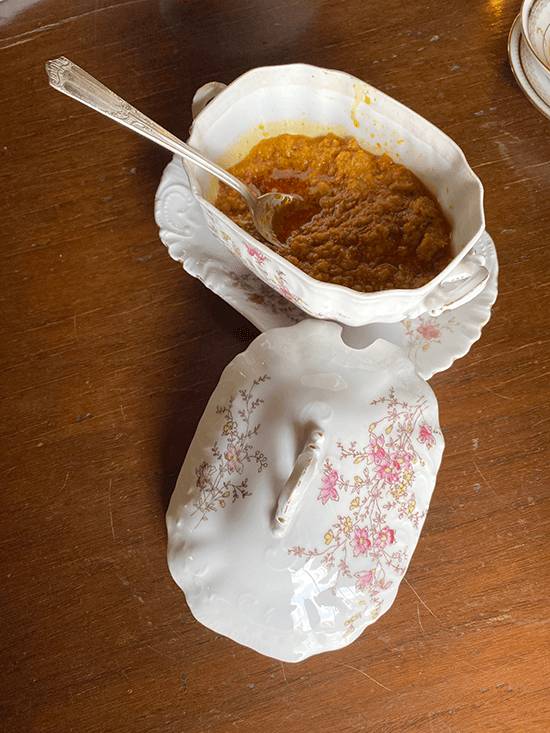The Alejandrino-Medina house in Arayat: A family’s traditions rooted in the community
Deep in the heart of the town of Arayat, Pampanga is nestled an unassuming ancestral home belonging to the Alejandrino-Medina family. The original structure of the house dates from the 1860s, built by wealth derived from rice farming a few decades before the sugar boom of the 1880s, which begat larger and showier structures in Pampanga.
My foodie friend, Marc Medina, the current steward of the house, invited my sister, Joanna Duarte, and I for some traditional Kapampangan-Arayat-Medina home cooking. We made our way north of Manila, with the beautiful and solitary Mt. Arayat as our compass point.
Immediately after our arrival, we began our visit in the camarin, or rice storage warehouse, across the street from the family home. Here are housed several silver-plated brass carrozas that carry the processional images of saints (imahens) under the care of the Medinas: Sta. Catalina (St. Catherine of Alexandria), the Señor Manalangin (Praying Christ), and San Pedro (St. Peter), as well as iterations of the Blessed Virgin: Mater Dolorosa, Alegria, Inmaculada, etc.

An antique wooden cabinet inside the Medina home carefully stores the detachable and interchangeable carved and painted wooden heads and hands of the imahens. Quite practically, the heads, hands, and garments of the figures are interchanged to create the required image for the occasion, the two most important ones being the Easter salubong tableaux and the November town fiesta dedicated to Sta. Catalina.

Traditional duties accompany the care of the imahens, which are perceived by the local community as both an honor and a responsibility. In the camarin, a couple of longtime workers of the Medina family were busy scraping melted wax from the glass votives that light the carrozas. Another task would be dressing the saints for specific occasions in elaborate, antique clothing embroidered with thick gold thread, which the town of Arayat is apparently famous for.
The house itself is of modest proportions and has been added to, organically, over decades. The upper floor, accessed by a simple side staircase, has a small central receiving area from which three large bedrooms and a front room lead off. Portraits of ancestors and an altar inhabit this space.

A wall has a blown-up 19th-century sepia photograph of one of the family’s patriotic forbears, Gen. Jose Magdangal Alejandrino, posing with a group of fellow ilustrados, including Jose Rizal and Marcelo H. Del Pilar in Madrid, Spain. Gen. Alejandrino was among the first delegates to the Malolos Congress of 1898, which drafted the first constitution of the republic.

The front room overlooking the street is particularly appealing. Accessed through wide-open wooden double doors, sunlight pours in from all three sides of the room through the vintage 1950s iron grills of the large windows and the turned wooden posts of the ventanillas beneath them.

Awaiting us on a lace-covered round table in the center of the room was a deliciously perfect combination of piping hot suam na mais (white corn soup) served in large teacups, together with pititian, the local meaty chicharron available from Primo’s in Sta. Ana town.

After this palate teaser, we headed to the dining room for the main attraction. The simple, wood-paneled dining room is dominated by a long dining table laid out with vintage table linens and sterling silverware engraved with Marc’s grandmother’s initials, purchased in Germany during an epic, six-month family trip to Europe in 1937.

At one end of the dining room is a low, wooden ledge fenced in with slats—a banggera—jutting out over the garden and enclosed by airy, screened windows. Upon it was laid an impressive array of home-cooked food: pancit langlang with condiments paired with sisig tokwa’t baboy (sisig simply means “soured” to Kapampangans), lechon horno from a local bakery’s wood-fired oven, sisig puso ng saging (soured banana heart), fried hito (catfish), and boiled local vegetables to be eaten together with the famous Kapampangan fermented condiments of buro (fish) or balo-balo (shrimp).

In the middle of the dining table were the Medina house specialties: a heaping plate of crispy, fried camaru (rice-field crickets), served alongside a pure, bright orange taba ng talangka served in a special lidded porcelain sauceboat that belonged to Marc’s great-grandmother.

Needless to say, everything was delicious, and I had to restrain myself from eating more of the pancit langlang and taba ng talangka, which were my favorites. To cap the meal, we were served two well-known desserts: a delicate tocino del cielo from Marc’s aunt, Piluchi Ocampo Fernandez, and the famous plantanillas, a stuffed sweet crepe made by Mrs. Carreon of the famous sweets maker Carreon’s of Magalang, Pampanga.

A tour of the recently restored all-bamboo kitchen that leads off the dining room was a revelation. Easily the largest room in the house, it was an expansive, high-ceilinged space with bamboo floor slats, crowned by a newly installed bamboo and nipa roof, a necessity after Typhoon Ulysses blew off most of it in 2020. Marc engaged the bamboo specialist architect Ning Encarnacion Tan to supervise the restoration. There are 10 yakal post supports and a particular method of joinery means there isn’t a single nail used. Various antique cabinets, working tables and chairs dot the room, the only concession to modern times possibly being the refrigerator.

Within the airy bamboo kitchen space, holding pride of place, was the heart of the Medina home—a wood-fired hearth stove as old as the original house (1860s), made from a traditional mix of clay, burnt rice husks, termite soil and egg white coating on adobe bricks. The kalang is officially manned by the current family cook, 83-year-old Aling Lucia, the youngest daughter of Marc’s great-grandfather’s cook. Like past cooks for the Medina family, she has contributed to the body of treasured recipes cooked over and over again in the home.

Aling Lucia has transferred her cooking expertise to her grandson, Kim, whom I mistook for a teenager with his turned-back baseball cap and street-boy attire, but who is actually a 32-year-old married man. When I asked which of the two of them had cooked the lunch repast, they both pointed at each other, giving credit simultaneously. The gesture was a reflection of the respect for culinary and religious traditions as well as the familial responsibilities that Marc and the Alejandrino-Medina family have sustained over generations, nurturing and contributing to the special character of the Arayat community they belong to.
My sister and I, urban dwellers through and through, felt fortunate to have experienced these special traditions in a corner of Pampanga.


